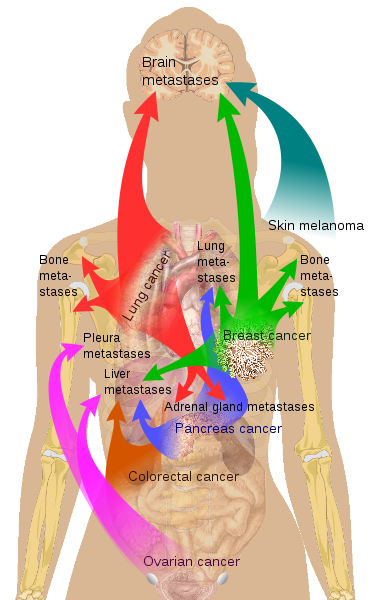Radiation Therapy
Radiation therapy is used in a number of cancers as both the main method of killing cancer cells or in combination with surgery (either before or after). The radiation comes in the form of high-energy x-rays that are delivered to the patient only in the areas at highest risk for cancer. These x-rays are similar to those used for diagnostic x-rays, only of a much higher energy. The high-energy of x-rays in radiation therapy results in damage to the DNA of cells, causing tumor cells to die.
Radiation therapy is not part of the routine management of adrenal cancers, particularly in cases where the cancer is completely removed by surgery. Radiation has been tried in cases where surgical removal of the cancer is incomplete or in cases where the cancer comes back after surgery. In these cases, the radiation is usually delivered daily, Monday through Friday, 5 days a week, for a total of 5 to 7 weeks. In general, the side effects associated with this treatment include fatigue, skin redness and irritation, nausea, and diarrhea.
Other Drug Treatments
Patients who are treated for adrenal cortical cancers may have symptoms that are due to levels of hormones that are either too high or too low. Physicians may recommend other medications, such as ketoconazole or metyrapone, to treat these symptoms.
What are the results of treatment for adrenal cortical cancers?
In general, adrenal cortical cancers are curable only in cases where the entire tumor is removed at surgery. Unfortunately, these tend to be aggressive cancers. Even when complete surgical removal is performed, they have a tendency to come back. The likelihood of this happening after a complete surgical resection is dependent upon the stage of the tumor. The 5-year overall survival describes the percentage of patients who are alive at 5 years after cancer treatment. After total tumor removal for stage I and II adrenal cortical cancers, the 5-year overall survival rate is 40-60%. For stage III cancers, the 5-year overall survival is 20%. For stage IV patients, the 5-year overall survival is 10%. There is a small percentage of patients who have slow-growing adrenal cortical cancers that can take a number of years to progress. It is unclear why these adrenal cancers act differently than the majority of adrenal cancers; however, these cases explain why 10% of patients who have disease that has spread to other parts of the body at the time of diagnosis (stage IV) are still alive at 5 years after diagnosis, despite the generally aggressive nature of these cancers.
How are other cancers that have spread (metastasized) to the adrenal gland treated?
In most cases, when other cancers spread to the adrenal glands, they are treated with chemotherapy that is known to be effective against the original cancer type. In some cases, if the adrenal gland is the only site in the body where the cancer appears to have spread, surgical resection of metastatic cancer and the adrenal gland can be performed, followed by treatment to the primary site where the cancer started. This has been shown to be curative in a small number of patients, particularly in the case of lung cancer.
After I am treated for an adrenal cortical tumor, how will I be followed?
Shortly after treatment for functional (secreting) adrenal tumors, blood will be drawn to measure hormone levels in the body. If the hormone levels have returned to normal after therapy, regular follow-up will occur. You will be followed every 3-6 months for several years after treatment. In the case of non-functional (non-secreting) adenomas and adrenal cortical cancers, periodic follow-up MRI or CT of the abdomen will be obtained for the first few years.



